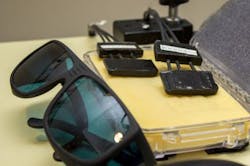Using a device designed at the University of Pennsylvania (Philadelphia, PA) that noninvasively and continuously monitors cerebral blood flow (CBF) in acute stroke patients, researchers from Penn Medicine and the Department of Physics & Astronomy in Penn Arts and Sciences are now learning how head-of-bed (HOB) positioning affects blood flow reaching the brain.
Most patients admitted to the hospital with an acute stroke are kept flat for at least 24 hours in an effort to increase CBF in vulnerable brain regions surrounding the damaged tissue. Researchers report in the journal Stroke that, while flat HOB did indeed increase CBF in the damaged hemisphere in most stroke patients, about one quarter of the patients had a paradoxical response and showed the highest CBF with their head at an elevated angle.
The Penn team has been developing and testing a new optical device that permits noninvasive and continuous monitoring of CBF at the patient's bedside. A noninvasive probe placed on the surface of the head measures the fluctuations of near-IR light that has travelled through the skull and into the brain, then back out to the tissue surface. These fluctuations are caused by moving red blood cells in tissue, and have been shown to accurately track CBF in underlying brain tissue.
The novel optical technique, called diffuse correlation spectroscopy (DCS), proved to be more sensitive for detecting CBF changes with HOB positioning than transcranial Doppler (TCD), which uses acoustic waves to quantify blood-flow velocity of the large arteries supplying the brain.
U.S. Patent 8,082,015 has been granted to the University of Pennsylvania for the optical CBF technology. Besides application to neurological disorders, it is being tested in a number of other clinical populations in whom CBF changes are relevant.
Source: http://www.eurekalert.org/pub_releases/2014-03/uops-bom031914.php

